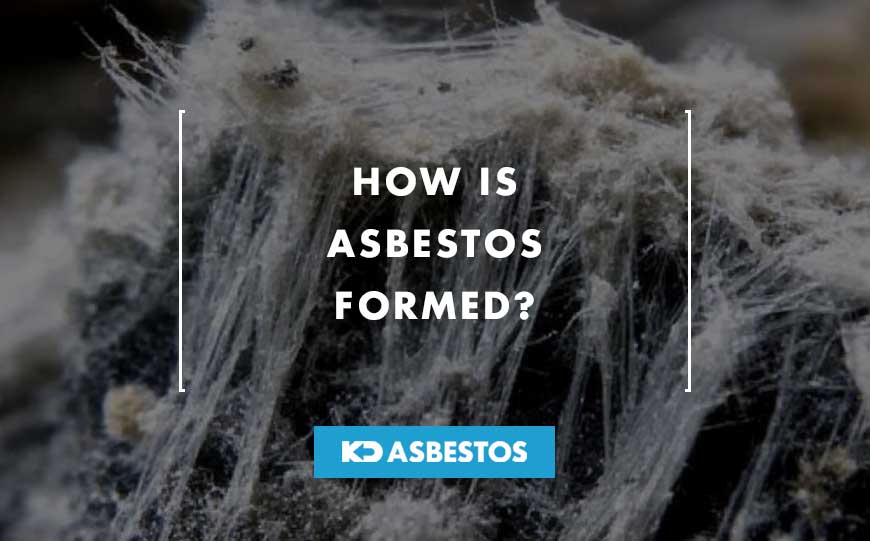
Asbestos is a naturally occurring mineral that was once widely used in construction, insulation, and manufacturing.
It became popular because of its resistance to heat, fire, and chemicals.
However, it is now known to be dangerous to human health, especially when its fibres become airborne and are inhaled.
Many people know about asbestos and its health risks, but fewer understand how asbestos forms in nature.
So exactly how is asbestos formed?
This article explains what asbestos is, how it forms in the Earth, and how it is transformed from rock into a usable material.
We will also explore how each of the six main types of asbestos is formed.
Table of Contents
What is Asbestos?
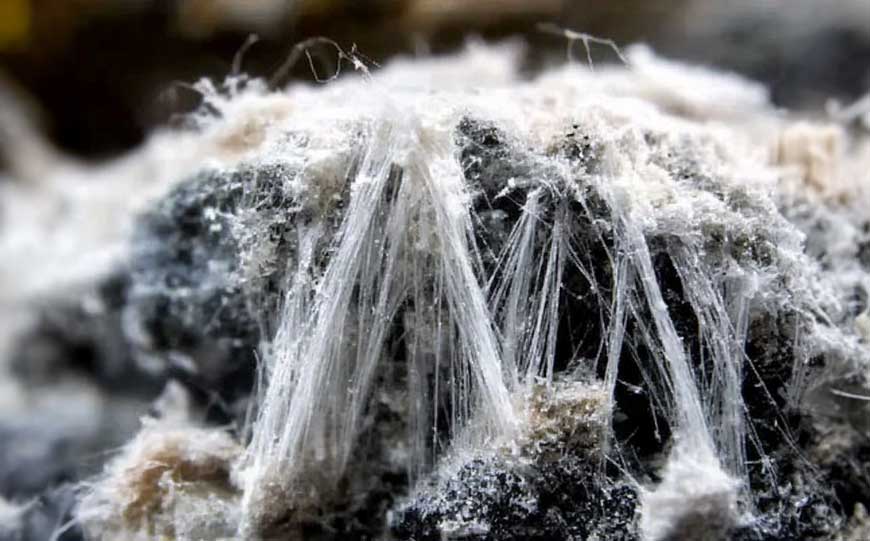
Asbestos is a naturally occurring mineral made up of tiny, fibrous crystals.
These fibres are strong, flexible, and highly resistant to heat, fire, and chemicals.
Because of these useful properties, asbestos was widely used in construction, insulation, and manufacturing throughout the 20th century.
There are six main types of asbestos, divided into two groups: serpentine and amphibole.
The most common type is chrysotile, also known as white asbestos, which belongs to the serpentine group.
The other five types – amosite, crocidolite, tremolite, actinolite, and anthophyllite – belong to the amphibole group.
Each type forms in slightly different ways and has different fibre shapes and colours.
Asbestos fibres can be woven into materials or mixed with products like cement and plaster.
It was once used in roofing sheets, pipe lagging, brake pads, ceiling tiles, and floor coverings.
However, it is now known that inhaling asbestos fibres can lead to serious health problems, including lung cancer, asbestosis, and mesothelioma.
Because of these risks, the use of asbestos has been banned or strictly regulated in many countries, including the UK.
Despite this, asbestos remains in many older buildings, and care must be taken when renovating or demolishing them to avoid exposure.
How is Asbestos Formed?
Asbestos is formed deep underground over millions of years.
It forms when certain minerals, rich in magnesium, calcium, and iron, are exposed to high temperatures and pressure.
This usually happens in the Earth’s mantle or in areas where tectonic plates collide.
The process that creates asbestos is called metamorphism.
This is when existing rocks change because of intense heat and pressure, without melting.
During metamorphism, the minerals within the rock can change their structure.
If the right conditions are present, these minerals form thin, fibrous crystals.
These crystals are what we call asbestos.
Water also plays an important role in forming asbestos.
Hot water from deep within the Earth moves through cracks in the rocks, carrying dissolved minerals.
This mineral-rich water helps form the fibrous shape that makes asbestos unique.
Different types of asbestos form depending on the local rock type, temperature, pressure, and chemical makeup.
Each type of asbestos has slightly different properties and appears in different geological settings.
How is Chrysotile Asbestos Formed?
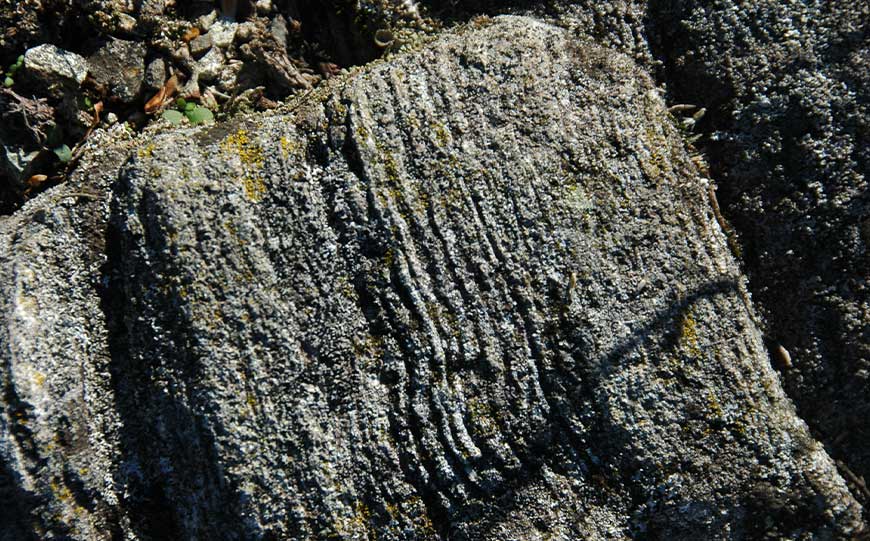
Chrysotile, also known as white asbestos, is the most widely used type.
It belongs to a mineral group called serpentine minerals.
Chrysotile forms through a process called serpentinisation.
This occurs when ultramafic rocks, such as peridotite or dunite, are exposed to water and low temperatures, usually between 200°C and 500°C.
These rocks are rich in the mineral olivine, which reacts with water and carbon dioxide.
As this chemical reaction takes place, serpentine minerals form, including chrysotile.
The resulting chrysotile has long, curly fibres, which can be woven and spun.
This flexibility made it very useful in textiles, insulation, brake pads, and pipe lagging.
Chrysotile is often found in serpentinite rocks, which are greenish, shiny, and smooth to touch.
These rocks are common in areas where ancient oceanic plates were pushed onto land, such as mountain belts formed during continental collisions.
How is Amosite Asbestos Formed?
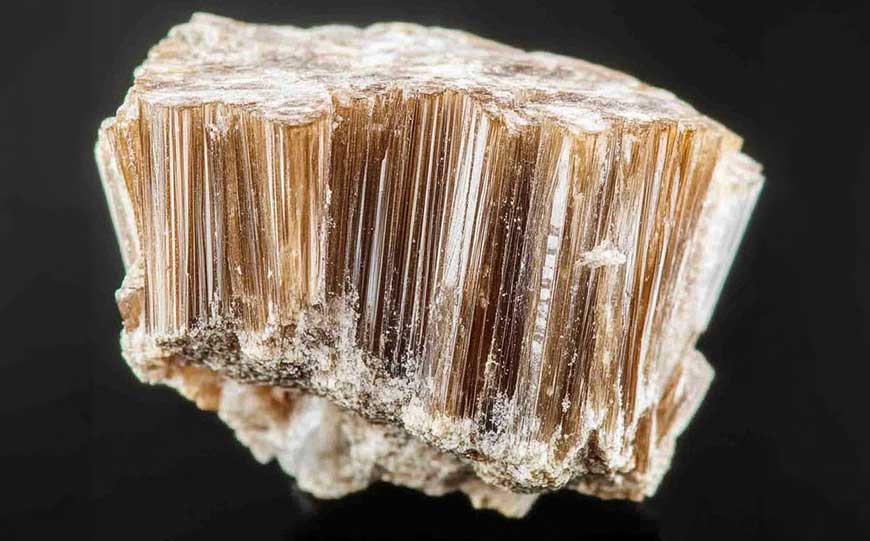
Amosite, known as brown asbestos, belongs to the amphibole group of minerals.
It has straight, needle-like fibres that are stiff and brittle.
These fibres are more hazardous when inhaled than the curly fibres of chrysotile.
Amosite is a type of grunerite, an iron-rich mineral.
It forms under medium to high-grade metamorphic conditions, where temperatures and pressures are high but not enough to melt the rock.
The host rocks are usually iron-rich sedimentary rocks, such as banded iron formations.
When these rocks are subjected to regional metamorphism, grunerite crystals grow.
If enough water and the right chemical conditions are present, grunerite forms fibrous crystals, which is how amosite forms.
Amosite was mined mainly in South Africa and used in insulation boards, ceiling tiles, and cement sheets due to its fire-resistant properties.
How is Crocidolite Asbestos Formed?
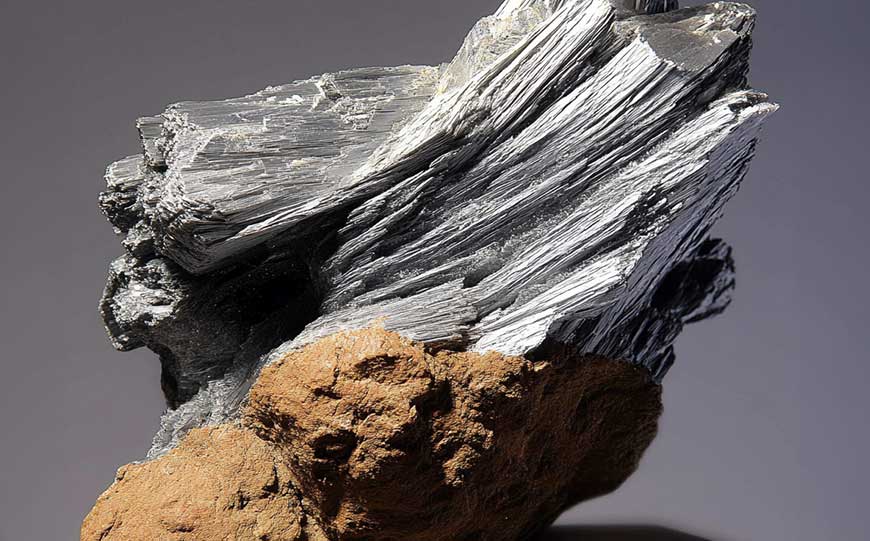
Crocidolite, also known as blue asbestos, is one of the most dangerous forms.
It has extremely thin, sharp fibres that can easily become airborne and lodge in the lungs.
Crocidolite is a fibrous form of the mineral riebeckite, which is also part of the amphibole group.
It forms in iron-rich metamorphic rocks, typically under high pressure and lower temperatures than other amphiboles.
Crocidolite is commonly found in banded iron formations, similar to amosite.
These formations occur in ancient sedimentary rocks that have undergone regional metamorphism.
The presence of sodium and iron in the right amounts causes the formation of fibrous riebeckite.
Crocidolite was mainly mined in South Africa and Western Australia.
It was used in insulation, spray coatings, and pipe lagging.
How is Tremolite Asbestos Formed?
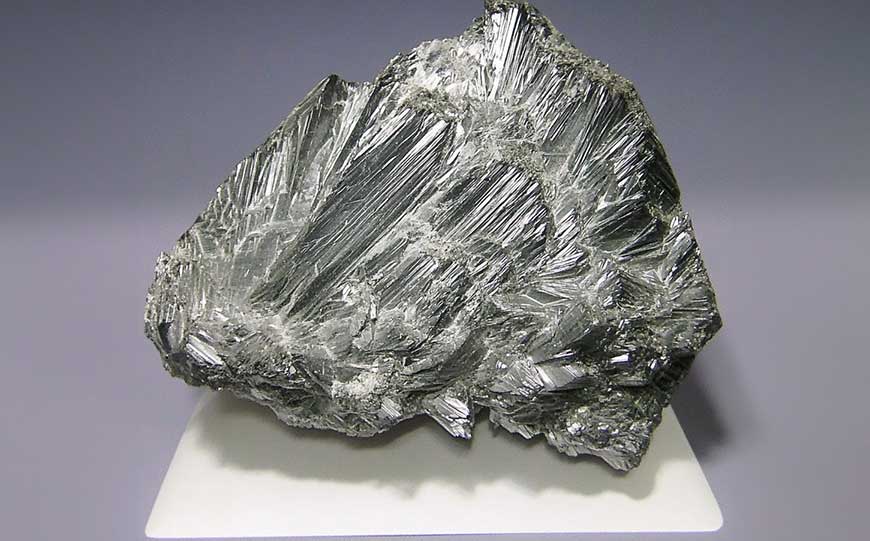
Tremolite is another amphibole mineral and can occur in both fibrous and non-fibrous forms.
Tremolite forms in calcium-rich metamorphic rocks, such as dolomitic limestone and marble.
These rocks undergo metamorphism under moderate temperatures and pressures, often involving the introduction of fluids containing silicon, magnesium, and other elements.
Tremolite forms long, thin, straight fibres similar to other amphiboles.
It is often found as a contaminant in talc and vermiculite deposits, which has led to unexpected asbestos exposure in some consumer products.
It is especially dangerous when disturbed and released into the air.
How is Actinolite Asbestos Formed?
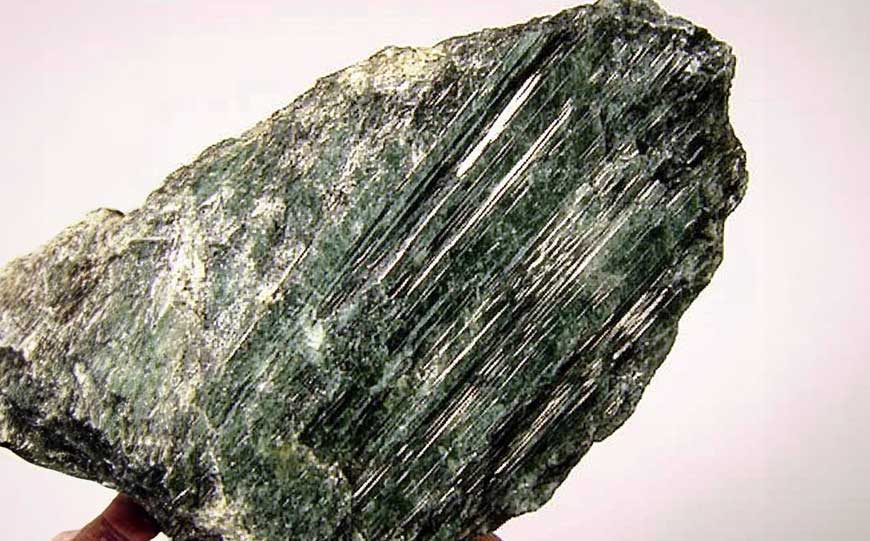
Actinolite is another amphibole asbestos mineral.
It has a greenish colour and forms under similar conditions to tremolite.
Actinolite forms in metamorphosed mafic rocks, such as basalt or gabbro, and sometimes in dolomite or other carbonate rocks.
The key ingredients are calcium, magnesium, iron, and silicon, along with heat and pressure.
Water also plays a part in forming its fibrous structure.
Like tremolite, actinolite can appear in both fibrous and non-fibrous forms.
When fibrous, it poses a serious health hazard.
Actinolite was not widely used in products, but it has been found in insulation materials and as a contaminant in other minerals.
It is a hazard mainly because of its sharp, needle-like fibres that can be inhaled.
How is Anthophyllite Asbestos Formed?
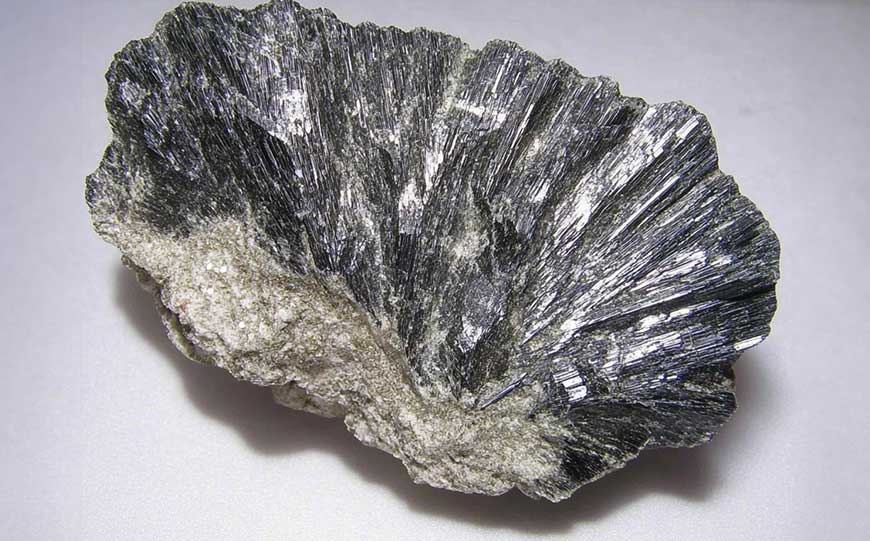
Anthophyllite is the least common type of regulated asbestos.
It forms from the metamorphism of magnesium-rich rocks, particularly those containing talc.
Anthophyllite develops under low- to medium-grade metamorphic conditions, with temperatures ranging from about 400°C to 600°C.
It is made up of magnesium and iron, and it can appear either as prismatic crystals or fibrous asbestos.
The fibrous form is rare but hazardous.
Like other amphiboles, it has stiff, straight fibres that can lodge in lung tissue.
Anthophyllite has been found in some insulation products and in talc-based items where it occurred as a contaminant.
It was never mined as extensively as other asbestos types, but it still poses health risks when disturbed.
How is Asbestos Rock Turned Into Usable Asbestos?
Turning asbestos rock into usable asbestos involves several careful steps.
The process starts with mining, followed by crushing, separation, and packaging.
Each stage is designed to extract the valuable fibrous material while keeping the fibres as long and undamaged as possible.
Mining
Asbestos is usually mined from open-pit or underground mines.
The method depends on the location and depth of the asbestos deposit.
Large machines are used to break and remove the asbestos-bearing rock from the ground.
Crushing and Grinding
Once the rock is brought to the surface, it is crushed into smaller pieces.
This helps to free the asbestos fibres from the surrounding rock.
The material is then ground further to loosen more fibres.
Fibre Separation
After grinding, the loose material goes through a separation process.
This may involve air suction, vibration, or water-based systems.
The aim is to separate the light asbestos fibres from the heavier rock particles.
In some cases, a flotation process is used to lift the fibres away.
Drying and Packaging
Once the fibres are separated, they are dried to remove moisture.
The dried fibres are then packed into bales or bags for transport.
These are sent to factories where asbestos is mixed with other materials, to make it into usable asbestos.
Conclusion
You should now have an understanding of how is asbestos formed.
Asbestos is not a man-made product; it is a natural mineral formed deep within the Earth under specific conditions.
Through the processes of heat, pressure, and mineral-rich water, rocks slowly transform and develop fibrous crystals over millions of years.
Each type of asbestos – chrysotile, amosite, crocidolite, tremolite, actinolite, and anthophyllite – forms in different environments, depending on the chemical makeup and structure of the surrounding rock.
While chrysotile is the most common and widely used, all types of asbestos are hazardous to health.
Understanding how asbestos forms gives us a better appreciation of the natural processes behind this once-popular, now highly controlled material.
Although asbestos has many useful properties, its dangers outweigh its benefits.
Today, efforts focus on safely managing and removing asbestos from buildings and protecting people from exposure.
For more information, or help with any of your Asbestos needs, get in contact with KD Asbestos today.